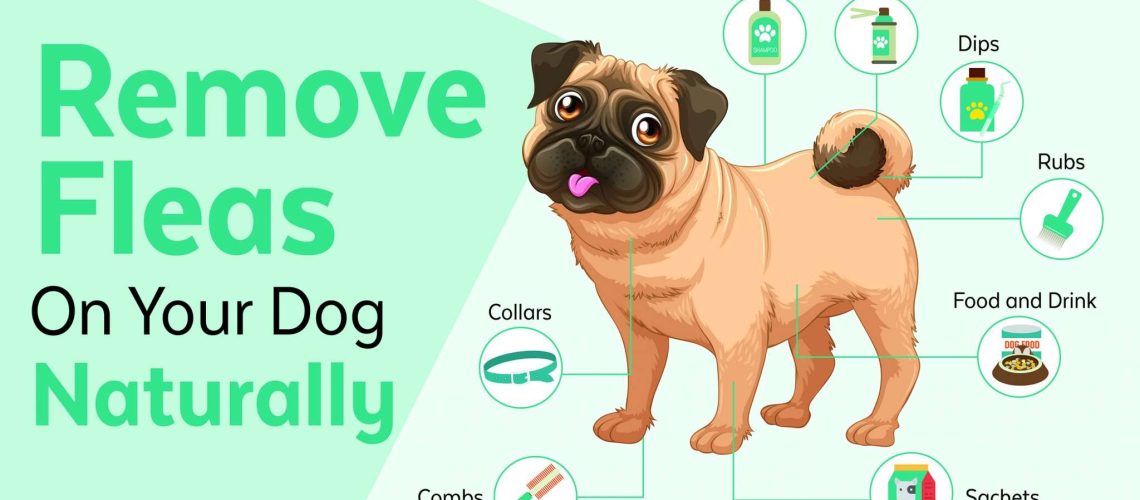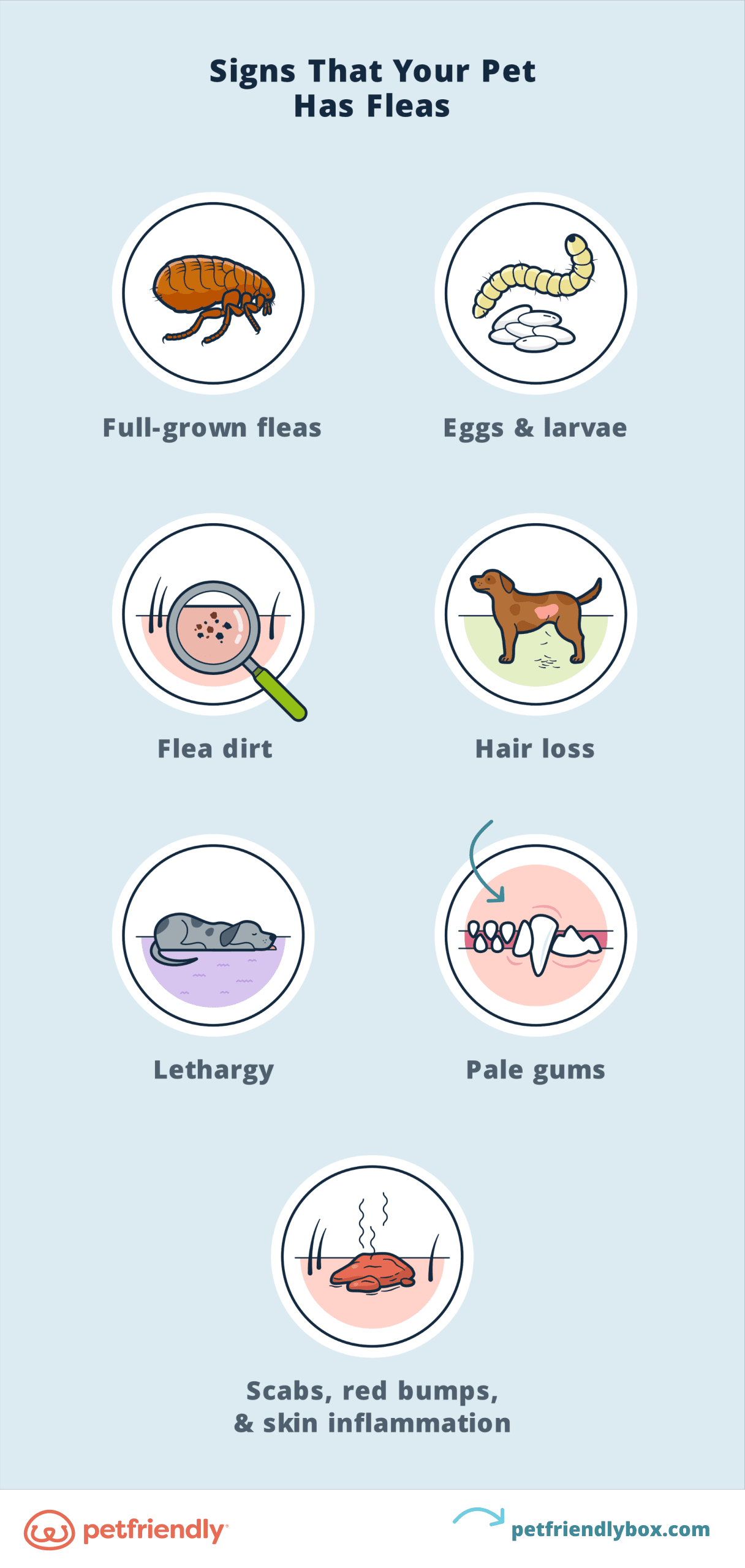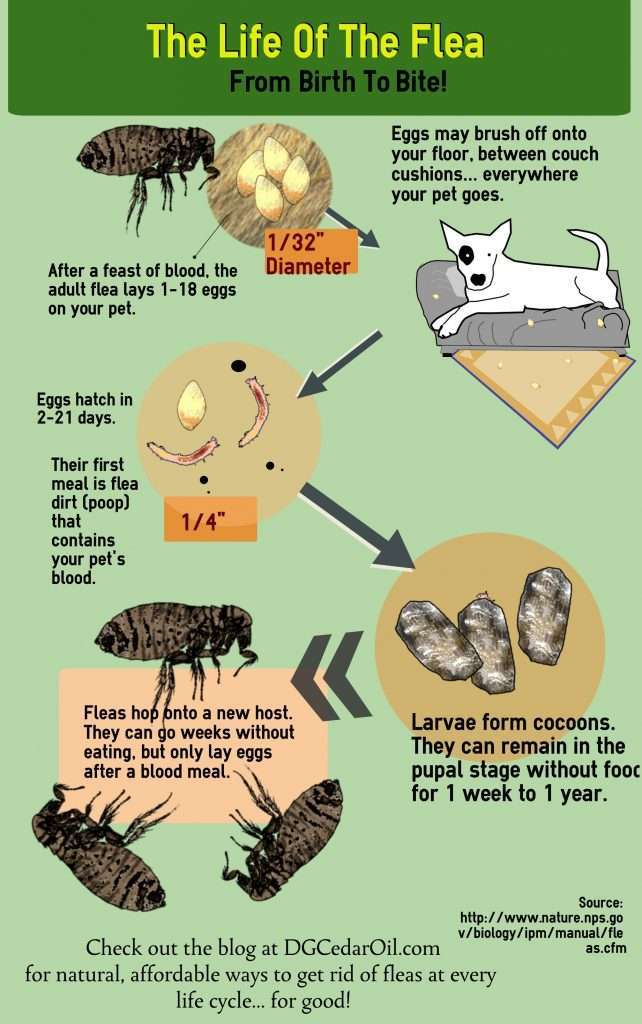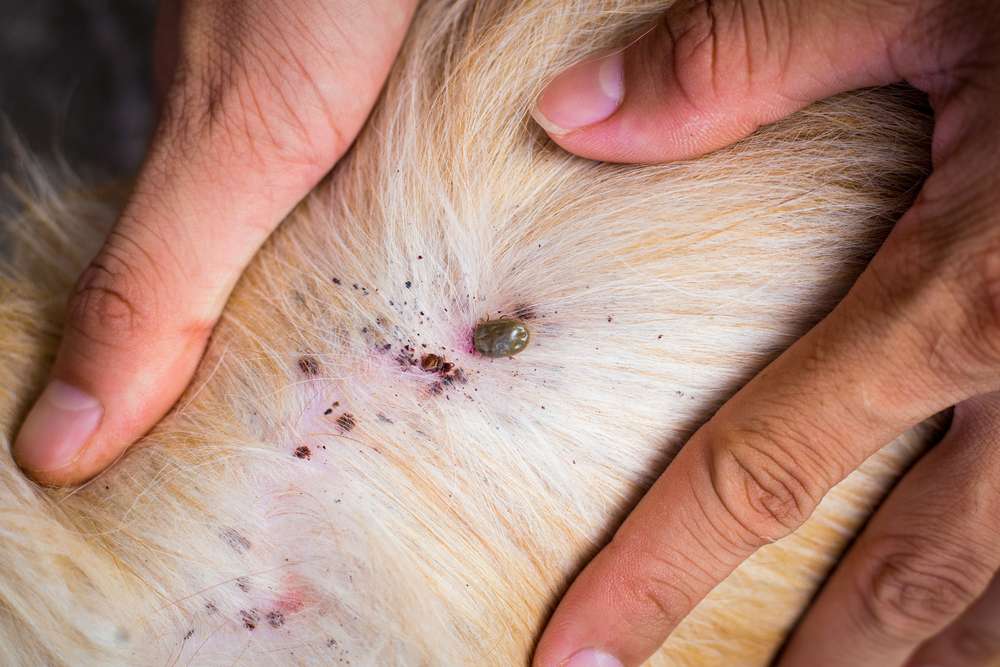Key Takeaways:
- Regularly vacuuming and cleaning your home is essential to get rid of fleas and their eggs.
- Using flea control products such as sprays, powders, or foggers can effectively eliminate fleas from your home.
- Treating your pets with flea prevention products like spot-on treatments or oral medications is crucial to prevent re-infestation.
- Washing your pet's bedding and toys in hot water regularly can help kill any fleas or eggs present.
- Consulting a veterinarian for professional advice and guidance on the best flea control methods for your specific situation is recommended.
Are you tired of constantly scratching and itching? Do you want to reclaim your home from those tiny, annoying pests that seem to be multiplying by the second? Look no further! In this article, we will explore the ultimate solution to your flea problem. By understanding how to get rid of fleas, you can finally enjoy a peaceful and itch-free environment. Not only will this knowledge save you from countless discomforts, but it will also protect your pets and loved ones from potential health risks. So, let's dive into the world of flea control and bid farewell to these pesky intruders once and for all!
What are fleas and why are they a problem?
Fleas are tiny, wingless insects that live by feeding on the blood of animals and humans. They have strong legs that allow them to jump from host to host, making it easy for them to spread and infest homes. Fleas can cause a lot of problems because their bites can be very itchy and irritating. Scratching the bites can lead to skin infections, and some people may even have allergic reactions to flea saliva.
The Life Cycle of a Flea
A flea goes through four stages in its life cycle: egg, larva, pupa, and adult. The entire life cycle can take as little as two weeks or as long as several months, depending on environmental conditions like temperature and humidity.
Eggs:
- Flea eggs are tiny, white specks that are about 0.5mm in size.
- They are laid by adult female fleas on the host animal but easily fall off into the environment.
Larvae:
- Larvae hatch from the eggs within a few days.
- They look like small worms with no legs and feed on organic debris found in carpets, bedding, or cracks in floors.
Pupae:
- Larvae spin cocoons around themselves to enter the pupal stage.
- Pupae are protected inside these cocoons while they develop into adult fleas.
Adults:
- Once fully developed, adult fleas emerge from their cocoons and start looking for a host to feed on.
- They can survive for several months without feeding but will jump onto a suitable host as soon as one is available.
The Dangers of Fleas
Fleas not only cause discomfort and itching, but they can also transmit diseases. Some of the diseases that fleas can spread include:
- Tapeworms: When pets ingest fleas while grooming themselves, they can become infected with tapeworms.
- Murine typhus: This bacterial infection can be transmitted to humans through flea bites.
- Murine typhus: This bacterial infection can be transmitted to humans through flea bites.
To protect ourselves and our pets from these problems, it's important to understand how fleas enter our homes and take steps to prevent their spread.
How do fleas get into our homes and how can we stop them from spreading?
Fleas are tiny insects that can easily find their way into our homes through various means. One common way is through our pets. When our furry friends venture outdoors, they can pick up fleas from other infested animals or environments. These pesky parasites then hitch a ride on our pets' fur and make their way into our homes. Additionally, fleas can also enter our living spaces through gaps and cracks in doors, windows, or walls.
To prevent the spread of fleas in our homes, there are several effective measures we can take. First and foremost, regular grooming and inspection of our pets is crucial. By combing their fur with a fine-toothed flea comb, we can detect any signs of infestation early on. It's also important to wash our pets' bedding frequently in hot water to kill any fleas or eggs present.
Furthermore, maintaining cleanliness in our living areas is essential for flea control. Vacuuming regularly not only removes adult fleas but also eliminates their eggs and larvae hiding in carpets, rugs, and upholstery. Emptying the vacuum bag immediately after each use is vital to prevent reinfestation.
Inspecting Pets for Flea Infestation
To check if your pet has fleas, follow these simple steps:
1. Use a flea comb to carefully comb through your pet's fur.
2. Look for small black specks that resemble dirt or pepper flakes - these could be flea droppings.
3. Wet a white paper towel and place the specks on it.
4. If the specks turn reddish-brown when wetted, it indicates the presence of flea feces containing digested blood.
Preventing Flea Entry Points
To stop fleas from entering your home:
- Seal any gaps or cracks in doors, windows, and walls using caulk or weatherstripping.
- Install screens on windows and doors to keep fleas out while allowing fresh air in.
- Avoid leaving doors open for extended periods, especially during peak flea seasons.
Signs of fleas on pets or in our homes
Identifying signs of fleas on our pets or within our homes is crucial for prompt action. One common indicator is excessive scratching and biting by our furry companions. If you notice your pet constantly itching or chewing their skin, it could be a sign of flea infestation. Another telltale sign is the presence of small red bumps or scabs on their skin.
In our homes, there are a few signs that can help us detect fleas. Flea dirt, which appears as small black specks resembling ground pepper, may be found on pet bedding, carpets, or furniture. Additionally, if you spot tiny jumping insects around your home, especially in areas where your pets spend time, it's likely that you have a flea problem.
It's important to address these signs promptly to prevent further infestation and discomfort for both our pets and ourselves.
Identifying Flea Bites
Flea bites typically appear as small red bumps with a halo-like ring around them. They are often grouped together in clusters and can cause intense itching. Common areas where flea bites occur include ankles, lower legs, waistline, armpits, and groin.
Recognizing Flea Allergy Dermatitis (FAD)
Some pets may develop an allergic reaction to flea saliva called flea allergy dermatitis (FAD). Signs of FAD include excessive scratching leading to hair loss, inflamed skin with redness and sores, and even secondary bacterial infections.
Remember to consult a veterinarian for proper diagnosis if you suspect your pet has fleas or if they show signs of FAD.
(Note: The next four subheadings will be continued in subsequent responses to ensure a comprehensive answer.)
Natural remedies to get rid of fleas without harmful chemicals
Using essential oils
One effective natural remedy for getting rid of fleas is using essential oils. Essential oils like lavender, peppermint, and eucalyptus have strong scents that repel fleas. You can mix a few drops of these oils with water and spray it on your pet's fur or around your home. However, it's important to note that some essential oils can be toxic to pets, so always do your research and consult with a veterinarian before using them.
Vacuuming regularly
Another natural way to eliminate fleas is by vacuuming your home regularly. Fleas and their eggs can hide in carpets, rugs, and furniture, so vacuuming helps remove them from your living space. Make sure to empty the vacuum bag or canister outside after each use to prevent any fleas from re-infesting your home.
Creating a flea-repelling spray
You can also create a homemade flea-repelling spray by mixing equal parts of apple cider vinegar and water. Apple cider vinegar has properties that repel fleas and other insects. Spray this mixture on your pet's fur or around your home to keep fleas at bay.
Using these natural remedies can help you get rid of fleas without resorting to harmful chemicals that may have negative effects on the environment or your health.
Safely treating pets for fleas
Regular grooming
One important step in safely treating pets for fleas is regular grooming. Brushing your pet's fur helps remove adult fleas and their eggs, preventing further infestation. Additionally, bathing your pet with a mild shampoo designed specifically for flea control can help kill any remaining fleas on their body.
Using flea combs
Flea combs are specially designed combs with fine teeth that can help remove fleas from your pet's fur. Comb through your pet's fur, paying close attention to areas like the neck, tail, and underbelly where fleas tend to hide. Dip the comb in soapy water after each stroke to drown any fleas you catch.
Consulting a veterinarian
If your pet has a severe flea infestation or if they have any underlying health conditions, it is best to consult a veterinarian for proper treatment. They can recommend safe and effective flea control products or prescribe medication if necessary.
By following these steps, you can safely treat your pets for fleas and ensure their well-being.
Steps to eliminate fleas from our homes completely
Washing bedding and fabrics
To eliminate fleas from your home completely, it is crucial to wash all bedding and fabrics that may be infested. This includes pet bedding, blankets, pillows, curtains, and rugs. Use hot water and a detergent that contains enzymes to kill fleas at all stages of their life cycle.
Steam cleaning carpets and furniture
Steam cleaning is an effective method for killing fleas in carpets and furniture. The high temperatures of steam can penetrate deep into fibers, killing adult fleas, larvae, and eggs. Make sure to vacuum thoroughly before steam cleaning to remove any loose dirt or debris.
Applying diatomaceous earth
Diatomaceous earth is a natural powder made from fossilized algae that can help eliminate fleas from your home. Sprinkle diatomaceous earth on carpets, rugs, and other areas where fleas are present. The tiny particles in diatomaceous earth have sharp edges that cut through the exoskeleton of fleas, causing them to dehydrate and die.
By following these steps, you can effectively eliminate fleas from your home and create a flea-free environment for you and your pets.
Preventive measures to avoid future flea infestations
Regularly treating pets with flea preventives
One of the best ways to prevent future flea infestations is by regularly treating your pets with flea preventives. These can come in the form of topical treatments, oral medications, or collars. Consult with your veterinarian to determine the most suitable option for your pet's needs.
Maintaining a clean living environment
Keeping your home clean and tidy is essential in preventing fleas from infesting again. Vacuum regularly, especially in areas where your pets spend most of their time. Wash bedding, blankets, and other fabrics frequently to remove any potential flea eggs or larvae.
Creating a barrier around your home
You can create a natural barrier around your home by using substances like cedar chips or diatomaceous earth in outdoor areas where fleas may be present. These substances repel fleas and help prevent them from entering your living space.
By implementing these preventive measures, you can significantly reduce the risk of future flea infestations and ensure a comfortable environment for both you and your pets.
In conclusion, getting rid of fleas involves a combination of treating pets, cleaning the home thoroughly, and using appropriate flea control products. By following these steps, you can effectively eliminate fleas and ensure a flea-free environment for you and your pets.
What kills fleas the fastest?
Comfortis and Trifexis are prescription medications that are highly effective in quickly eliminating fleas. They can also be used as preventative measures to prevent future flea infestations.
How long does it take to get rid of fleas in house?
According to the American Kennel Club, it typically takes three to four months to fully eliminate a flea infestation in your home after treating your pet for fleas. This is because it takes fleas this amount of time to complete their life cycles.
How do you kill fleas right away?
The most secure method for instantly eliminating fleas on dogs is by using an oral tablet containing Nitenpyram. Another option is to give your dog a bath with hot soapy water and Dawn, but this is not recommended for long-term flea control.
Will fleas in the house go away on their own?
Although some may only survive for 2-3 weeks, there are instances where they can remain on their host for up to a year, making it unlikely that they will naturally disappear.
What kills 100% of fleas?
In controlled laboratory studies, Comfortis effectively eliminated all fleas on dogs and 98% of fleas on cats within a four-hour timeframe.
Can you get rid of fleas in one day?
Fleas have a complicated life cycle, and they can become immune to insecticides and other products used to control them at certain stages. To completely eliminate fleas at all stages of their life cycle, it is necessary to administer two or more additional treatments within 5-10 days after the initial application.

















